Figures & data
Table 1 Theoretical expressions for the functions Φ and Ψ. The current best estimates of the thermal creep, velocity slip, and temperature jump coefficients are Ktc = 1.10, Cm =1.13(2−α m )/α m , and Ce =2.17(2−α e )/α e
Figure 1 Curves of −Φ/(2π) plotted against log10(Kn) for various Λ using the interpolation formula of CitationTalbot et al. (1980) with αm = αe = 1. All curves asymptote to Epstein's continuum limit as Kn→0.

Figure 2 The spherical polar (r, θ, φ) coordinate system used for the G13 analysis. There is axial symmetry around the z-axis (∂/∂φ=0).
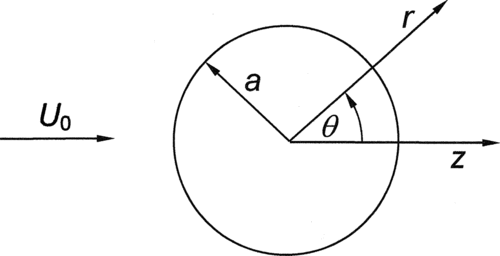
Figure 3 Curves of −Φ/(2π) plotted against log10(Kn) for various Λ using Equation (31a) (Brock's theory plus the temperature-driven part of the thermal stress). Reversed thermophoresis at high Λ is evident but the behavior at high Kn is nonphysical.
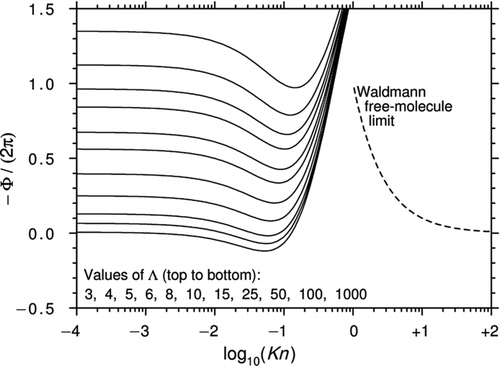
Figure 4 Curves of −Φ/(2π) plotted against log10(Kn) for various Λ using Equation (32a) (Dwyer's theory with the pressure-driven heat flux included correctly). For Kn < 0.2, the curves are almost identical to those of but the behavior at high Kn is nonphysical.
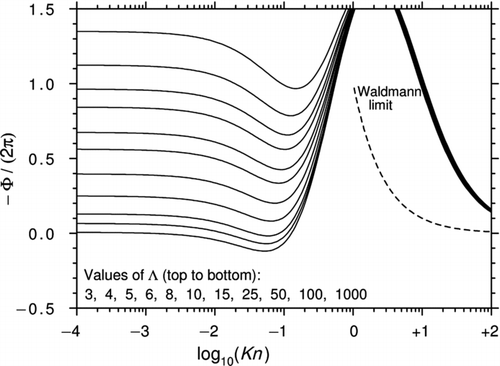
Figure 6 Curves of −Φ/(2π) plotted against log10(Kn) for a perfect thermally conducting sphere (Λ→∞). The calculations are from Sone and Aoki (1981, 1983) and CitationYamamoto and Ishihara (1988). Also shown is Equation (43) from Ivchenko and Yalamov, the first-order correction in ![]()
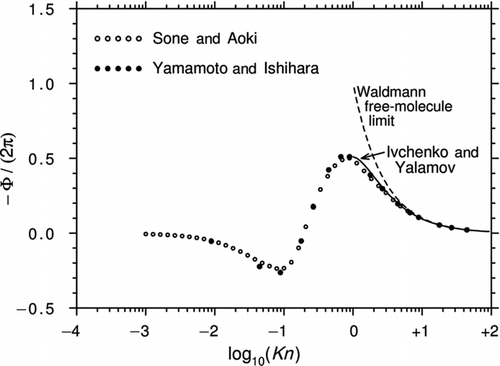
Table 2 Published experimental data for the thermophoretic force
Figure 7 Curves of −Φ/(2π) plotted against log10(Kn) for various Λ from CitationYamamoto and Ishihara (1988). The black circles are calculated from Equation (44) and Tables 1 and 2 of the original article. Also shown are the Epstein continuum limits.

Figure 8 Curves of −Φ/(2π) plotted against log10(Kn) for various Λ from CitationBeresnev and Chernyak (1995). The black circles are calculated from Equation (45) and Table 1 of Beresnev and Chernyak. Also shown are the Epstein continuum limits.
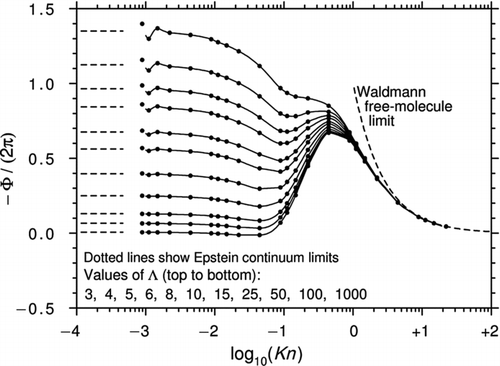
Figure 9 The thermophoretic force data of (a) CitationSchmitt (1959); (b) CitationSchadt and Cadle (1961); (c) CitationJacobsen and Brock (1965); (d), (e), and (f) Li and Davis (1995a, 1995b). Theoretical predictions for the corresponding values of Λ: Beresnev and Chernyak (solid lines), Yamamoto and Ishihara (dotted lines).
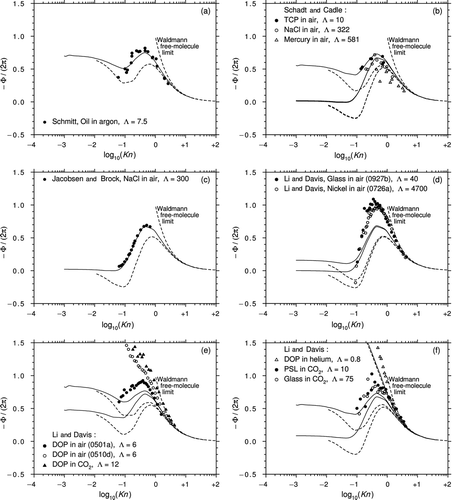
Table 3 Published experimental data for the thermophoretic velocity
Figure 10 The thermophoretic velocity data of (a) CitationSchmitt (1959), (b) and (c) CitationSantachiara et al. (2002), (d) CitationProdi et al. (2007), and (e) CitationSagot et al. (2009). Theoretical predictions for the corresponding values of Λ: Beresnev and Chernyak (solid lines), Yamamoto and Ishihara (dotted lines).
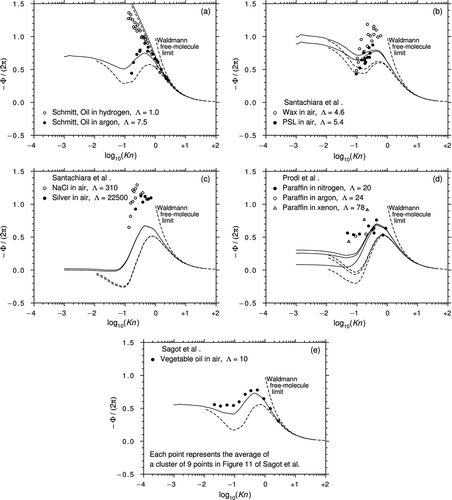
Figure 11 Curves of −Φ/(2π) plotted against log10(Kn) for various Λ. The white circles are from CitationYamamoto and Ishihara (1988), the black circles are from CitationBeresnev and Chernyak (1995), and the solid lines are from the interpolation formula Equation (47) with Cint = 0.5.
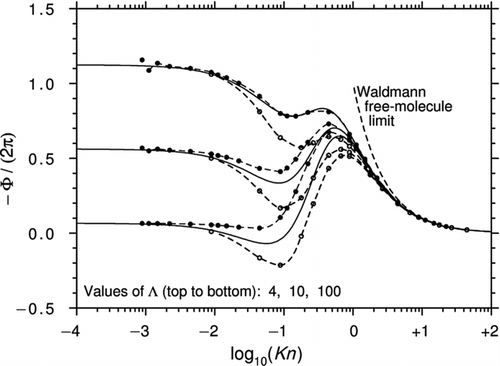
Figure 12 Curves of −Φ/(2π) plotted against log10(Kn) for various Λ using the interpolation formula Equation (47) with Cint = 0.5. For Kn < 0.2, the curves are almost identical to those of Figures 3 and 4. For comparison, the CitationTalbot et al. (1980) prescription is also plotted.

